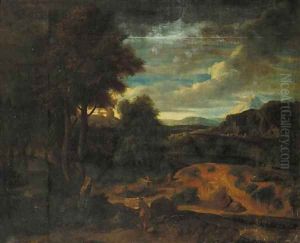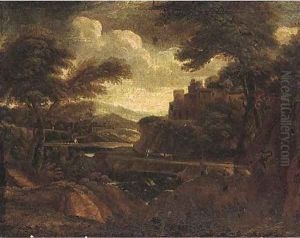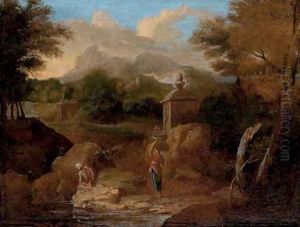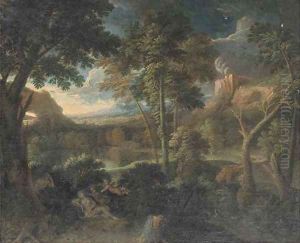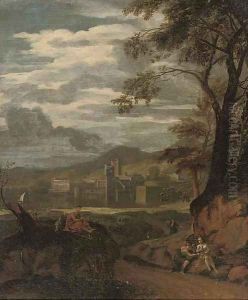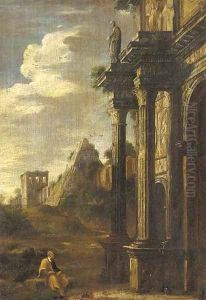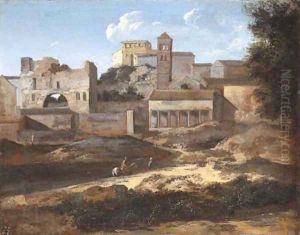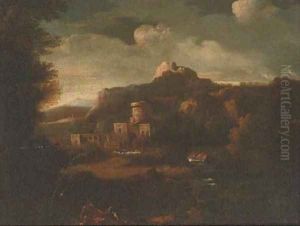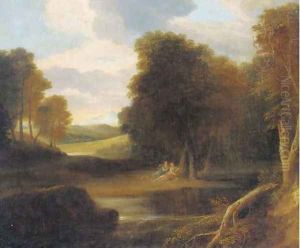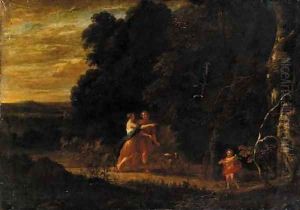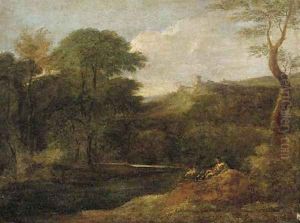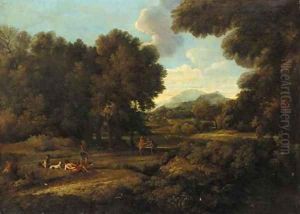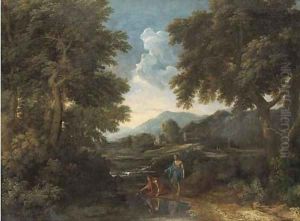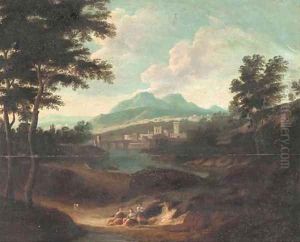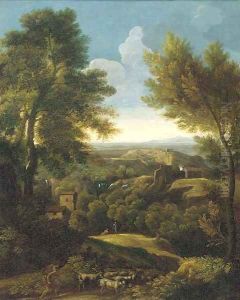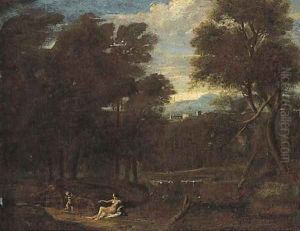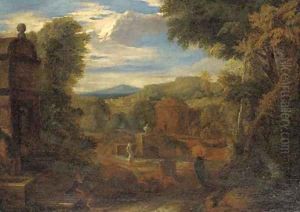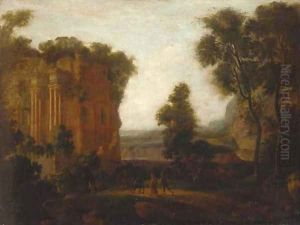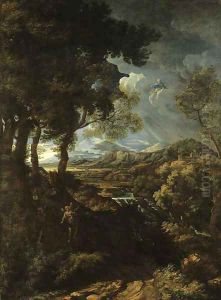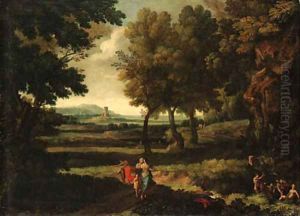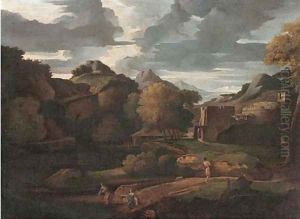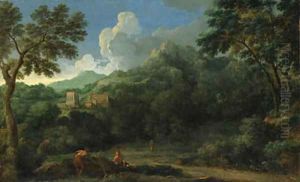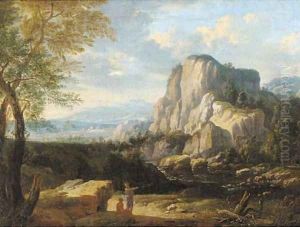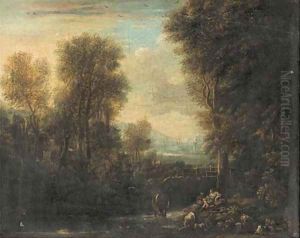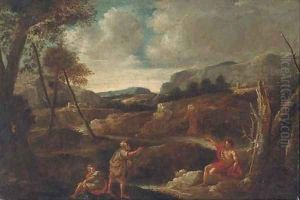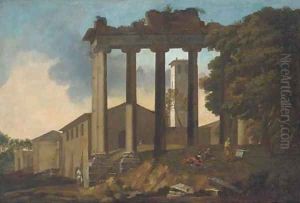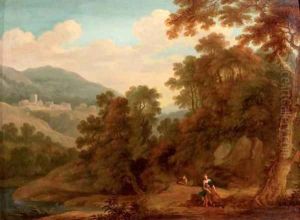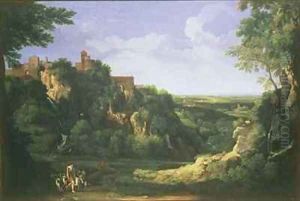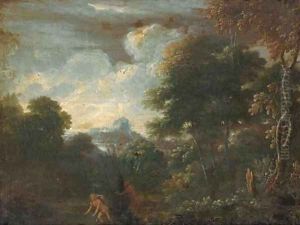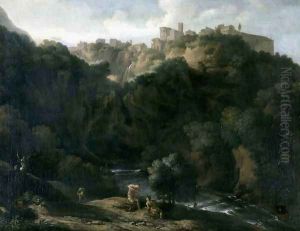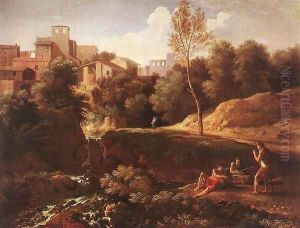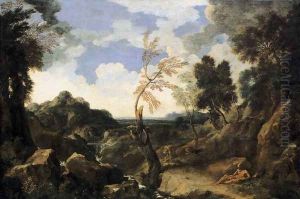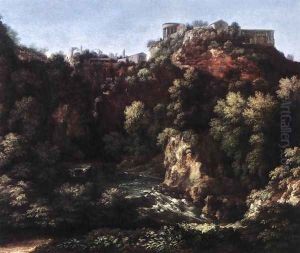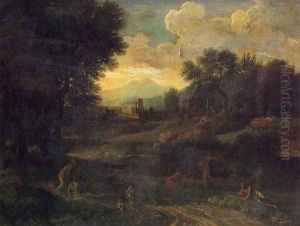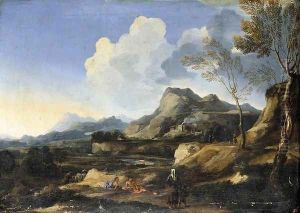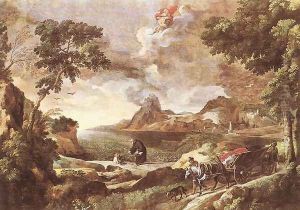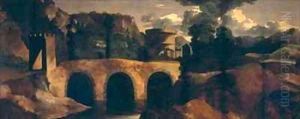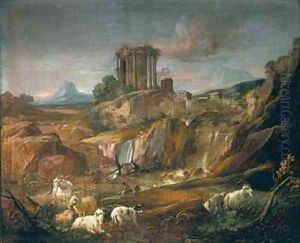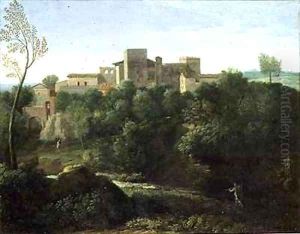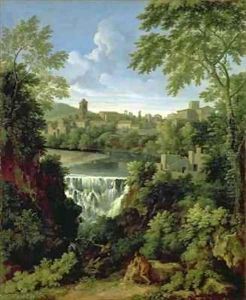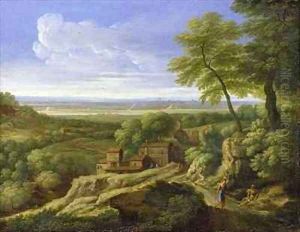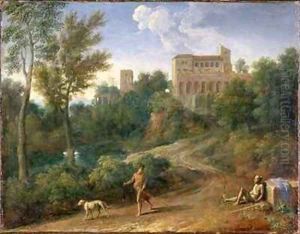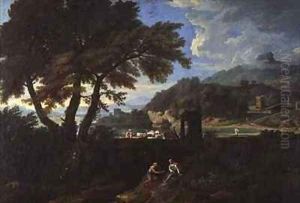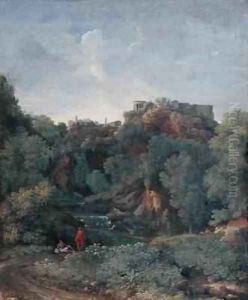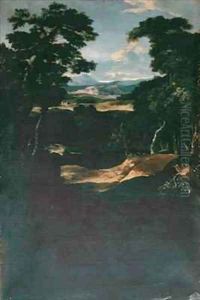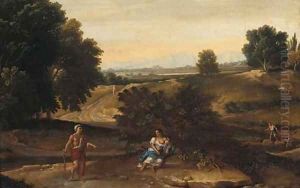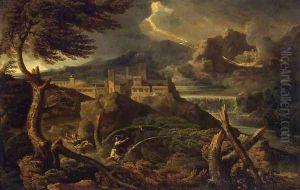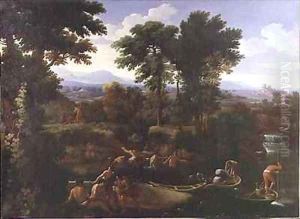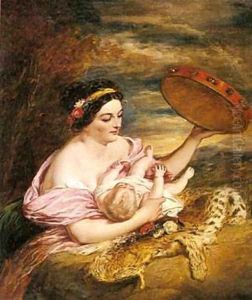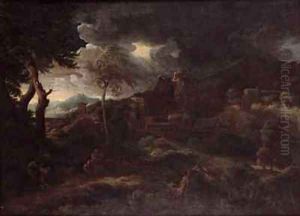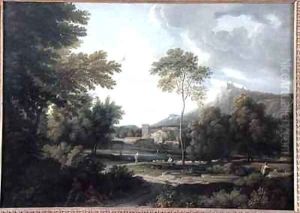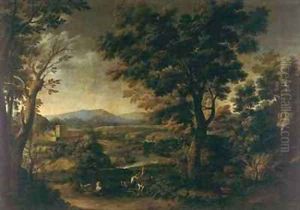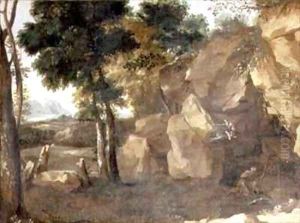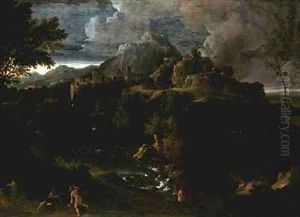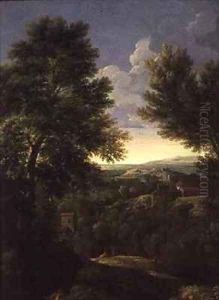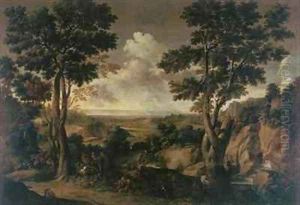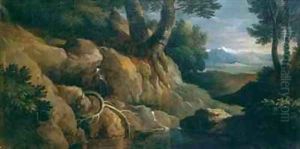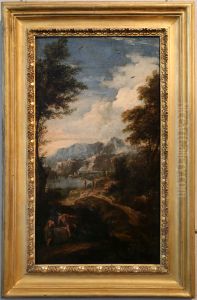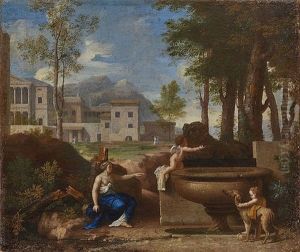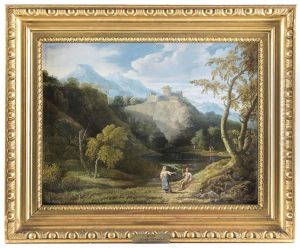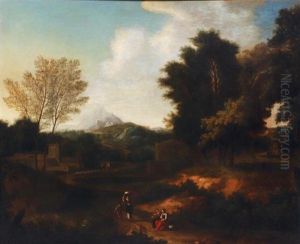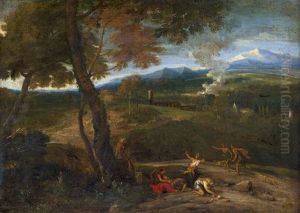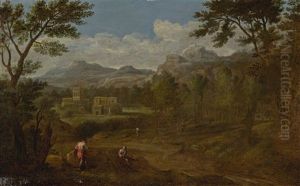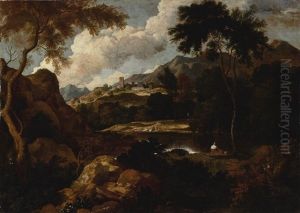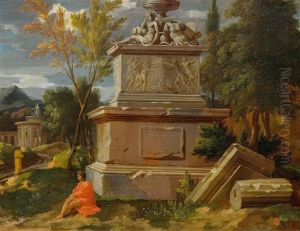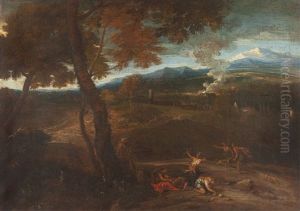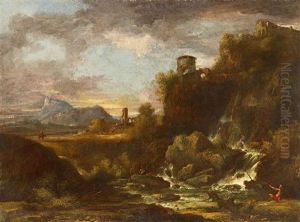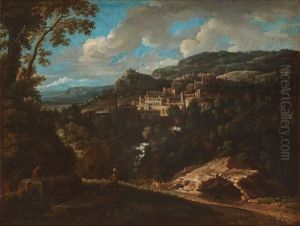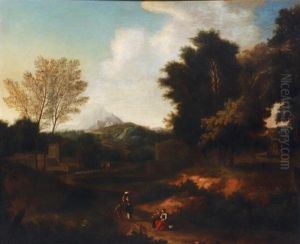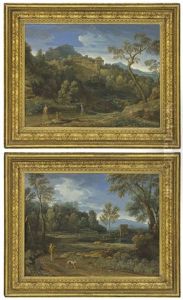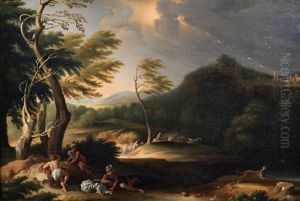Gaspard Dughet Paintings
Gaspard Dughet, also known as Gaspard Poussin due to his association with his brother-in-law Nicolas Poussin, was a French painter born in Rome, Italy in 1615. He was known for his landscape paintings which were influenced by the Roman Campagna. Dughet's landscapes are characterized by their classicizing tone, often incorporating elements from the works of earlier masters such as Titian and Claude Lorrain.
Gaspard was the son of a French pastry-cook and his Italian wife. Although he was born in Rome, he maintained his French nationality throughout his life. His sister's marriage to Nicolas Poussin had a significant impact on his career. Under the guidance of Poussin, Dughet developed his painting skills, especially in the genre of landscape painting, which would come to define his artistic legacy.
Dughet's work was greatly admired for its dramatic use of light and shade, as well as its idyllic and often pastoral scenes. He became particularly adept at depicting different times of day and weather conditions, bringing a dynamic and atmospheric quality to his work. His landscapes were not just mere representations of nature; they were imbued with a poetic quality that sought to express an idealized vision of nature.
Throughout his career, Dughet received numerous commissions from notable patrons, including members of the aristocracy and the Catholic Church. His landscapes were especially sought after by collectors and connoisseurs of the Grand Tour, who appreciated the evocative depiction of the Italian countryside.
Dughet continued to live and work in Rome for the majority of his life and was a member of the Accademia di San Luca, the premier guild for artists in the city. His influence was significant among French and Italian landscape painters, and his works can be found in many major art galleries around the world.
Gaspard Dughet's contribution to landscape painting was significant in that he helped to establish the genre as an important and respected form of art during the 17th century. He died in Rome in 1675, leaving behind a body of work that continues to be celebrated for its beauty and influence on the development of European landscape art.
